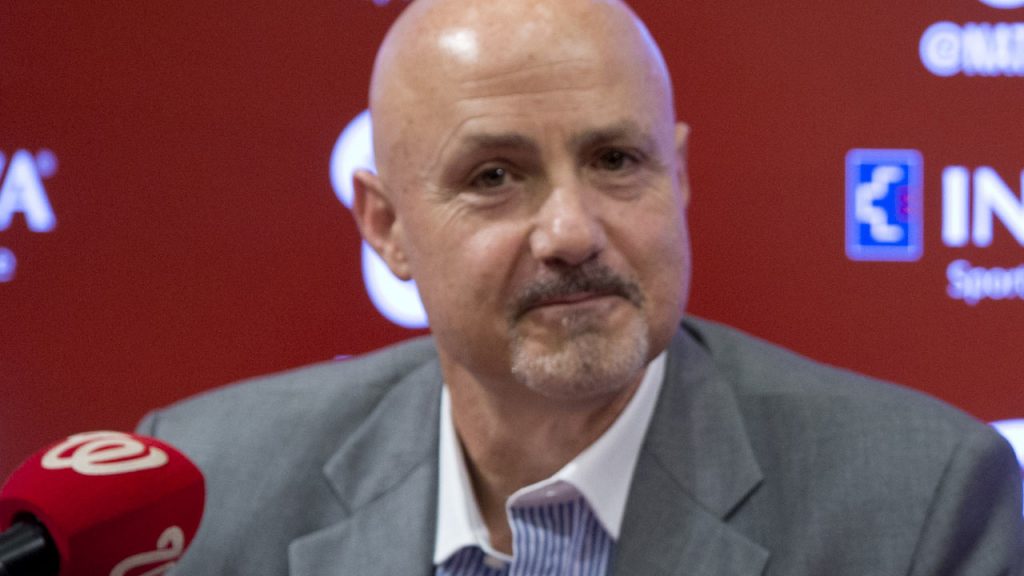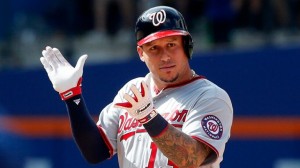
Since we have no playoffs to discuss, we’re pivoting immediately into off-season mode.
The Nats procedurally on 9/28/20 activated all their 10-day DL players. They also procedurally recalled the last three remaining players from the 40-man alternative site for the purposes of off-season moves. Amazingly, they ended the season with 9 players on the 10-day DL and just one healthy player on the 40-man roster not already playing (Raudy Read).
https://www.mlb.com/nationals/roster/transactions/2020/09
Free Agents to-be are immediately declared FAs at 8am Central time the day after the World Series ends. The team doesn’t have to restore its 60-day DL players until 5 days after the World Series ends, which allows them to add them back after free agents are declared and after the team has a small exclusive window to negotiate. So, we have to wait for about a month to see the next dominos fall, but we can start to speculate now.
Based on my records, here’s how our roster will look in the off-season, which will drive the decisions to make. We’ll classify these players into 5 categories
Category 1: Players under a “veteran” contract for 2021 (7): Scherzer, Strasburg, Corbin, Hudson, Harris, Gomes, Castro. Seven players but a huge payroll hit (per Cots, these 7 players count for $120M or so in cap space next year.
Category 2: Pre-Arbitration players under full team control (22): Voth, Fedde, Crowe, Finnegan, Harper, McGowin, Braymer, Espino, AWilliams (TJ aug 2020), Read, Garcia, Noll, Robles, Stevenson, Hernandez, Bacus, Rainey, Bourque, Kieboom, Sanchez, Romero, Barrera. That’s a ton of players on pre-arb deals, which is important since they will represent a huge chunk of the active roster in 2021. I think a few of these pre-arb guys are in discussion for “first 40-man guy to get DFA’d when the team needs room” territory (Noll, Williams, Sanchez) but for now, they’re all in play. Note: a couple of these guys were technically MLFA signings in 2020 so i’m not sure if they are now pre-arb or still FAs. Apologies if I got their status wrong).
Category 3: Arbitration-eligible players for 2021 (8). Here’s where we start discussions. Player by player:
- Suero (A1); lock to tender
- Turner (A3): lock to tender
- Soto (A1): lock to tender. I saw something recently that seemed to indicate he may or may not be a Super-2 guy, but he was projecting to be Super-2 after last off-season so i’m assuming he’s Arb-eligible this year.
- Taylor (A4); Nothing has really changed with Taylor; he struggled at the plate again but hit a few bombs, which drove his OPS+ figure up a bit from what you’d expect for someone who hit below .200. The change in Taylor in 2020 is that his defensive numbers COST him WAR this year instead of helped. Probably Small Sample Size driven, but Taylor’s bigger problem is that his direct competition as “4th outfielder” on this roster Andrew Stevenson just blew up in 2020, making Taylor an obvious non-tender candidate.
- Guerra (A4); his contract status is odd; he has bounced back and forth on and off the roster and signed a combo major/minor FA deal this past off-season. But Cots lists him as arb-eligible, so i’m not entirely sure if he’s a FA or if he’s arb eligible. My guess is that the team cuts another deal with him and non-tenders him if he’s eligible then immediately re-signs him the next day.
- Barrett (A3); another odd case; how much does sentimentality count? The team called up a slew of other prospects before recalling Barrett this year, he pitched in 2 games then hit the DL. It seems to me he’s a non-tender candidate and at age 32 could be facing one last shot at making a MLB roster next year.
- Elias (A3); 2020 a lost season for Elias, who went onto the 60-day DL early and barely pitched in 2019 for this team as well (thanks to the idiotic decision in Aug 2019 to allow him to hit, which resulted in a leg injury with him running out a grounder in a meaningless at bat). The Nats didn’t give up a ton to acquire him (giving up two decent minor league arms in Taylor Guilbeau and Elvis Alvarado) so I can’t imagine them non-tendering him, but how do you do salary evaluation of a player who misses an entire year?
- JRoss (A3); he opted out in 2020, and his absence was felt immediately when it became clear his 5th starter replacements could not cut it. I think you tender him and he goes back into the starter competition for 2021. Worst case he gets cut mid-way through spring training and the Nats escape with 1/6th of his salary.
Category 4: Players with Options for 2021 (5): here’s where we start having some tougher decisions.
- Sanchez: $12M club option, $2M buyout: I’m not sure how you take this option if you’re the Nats after the season we just saw. Sanchez was lucky to post the numbers he did in 2019 (his FIP was more than a half a point higher than his ERA), and he bottomed out in 2020. Decline the option, pay the buyout.
- Thames: $4M mutual option, $1M buyout. Thames posted just a 65 OPS+ playing primarily as a 1B/DH type. That’s just patently awful, considering how many options there were on the market for “non-mobile mid-30s slugger.” Decline the option, pay the buyout.
- Holt: $5M club option, $750k buyout. He took a significant step back from his Boston numbers, which resulted in Milwaukee cutting bait on him a month into a 2year deal. Despite his positional flexibility (he played 6 positions in 20 games for the Nats) I don’t see how you guarantee $5M to a guy who didn’t “wow” you in his audition. Decline the option, pay the buyout.
- Eaton: $10.5M club option, $1.5M buyout. Phew; what do you do here. His fourth straight year in offensive decline. He was awful defensively. But he’s only 31; does the team take the $10.5M option and roll the dice that 2020 was an anomoly? If they cut him, do they have a replacement minor leaguer that makes sense (not really no). So do they roll the dice that they can get comparable production on the FA market for the same price? How much does sentimentality factor in here? Clubhouse presence and managerial relationship? Again, he’s only 31, which is a lot different from 36 (see next). I think the team exercises the option.
- Kendrick: $6.5M mutual option, $2.25M buyout. Word came out a few days ago that Kendrick was considering retirement until he got hurt. I’m not sure I buy that, not with a 6.5M option on the table and more gas left in the tank. Another sentimental pick here; a guy who can plug in multiple positions in a pinch and who now has the DH to settle into if need be. Also a factor here; much like in poker, if you’re into a hand already for the big blind, why not make a call for a little bit more? Declining the option only saves them $4M, and it may be worth the cost to keep a veteran presence around one more time. I mean, if Eaton is there, you gotta keep his buddy Howie right? Exercise the option.
Category 5: Unrestricted FAs (6). Now, there’s nothing the team can really do with these guys since they’re FAs. But we can talk about whether or not we think the team pursues them in the off-season:
- Suzuki; do you re-sign a 37yr old catcher? He’s been amazingly consistent at the plate the last few years while splitting time pretty evenly with Gomes. Still sporting a decent OBP. Is he getting pushed out by rising minor league depth (hardly, unless you think Read or Barrera is an option in the majors in 2021). I might pursue a 1-yr deal.
- Cabrera: reverted to his 2018-19 form at the plate, league average providing poor, slow, aging defense at multiple infield positions. I think you move on.
- Harrison really showed a jolt for this team, but he’s a 2B on a team with a prospect seemingly installed there for the longer run.
- Doolittle: tough one. Struggled last year, struggled this year. A huge part of the community, outspoken leader. Maybe bring him back on an incentive-laden deal?
- Freeman (TJ Aug 2020); really bad timing on his TJ surgery, as he’s a FA and will be rehabbing on his own.
- Zimmerman, the most difficult decision of all. The team was onboard with a $2M deal for 2020 before he opted out for completely understandable family reasons. 2020 was his age 35 season; I’d guarantee him a $2M incentive-laden deal to be a 1B/DH platoon with a lefty slugger for 2021 absolutely. When he’s healthy he can hit, and doing nothing but DHing will help keep him on the field. Its worth a flier for a guy who is either retiring to the Nats front office or playing in 2021.
If the team does exactly what I say here, what would be our needs heading into the off-season? First lets see how this would look from a roster perspective (not counting FAs):
- SP: Scherzer, Strasburg, Corbin, JRoss (A3), Voth, Fedde, Crowe, McGowin, Braymer, Espino, Romero
- RP: Hudson, Harris, Suero, Elias, Finnegan, Harper, Bacus, Rainey, Bourque
- C: Gomes, Read, Barrera
- INF: Castro, Turner, Garcia, Noll, Kieboom, Sanchez, Kendrick
- OF: Soto, Robles, Stevenson, Hernandez, Eaton
Immediate thoughts on areas of need:
- Another starter. I’m just not sure you can go into 2021 with your 4th/5th starters being Ross, Voth, Fedde and Crowe. I’m not sure I trust what I saw from McGowin or Braymer. Espino has never really succeeded in the majors and seems like the definition of a 4-A guy. And Romero? Maybe he can step up now that he’s gotten his debut out of the way.
- Reliever help: I see 5-6 mlb-quality relievers here, but we’d need like 12 on the 40-man roster.
- Catcher; as discussed with Suzuki above
- Infield: well, right now your starting infield in 2021 is Castro/Kieboom at 3rd, Turner at SS, Garcia/Castro at 2nd, Kendrick at 1st (if they exercise his option), with Noll and Sanchez in AAA or released. They probably need more depth here.
- Outfield: If they exercise Eaton’s option, then little needs to be done. If they don’t, then they’ll need a starting corner OF.
In other words, they need help basically everywhere.
Thoughts? did I get anything wrong?








